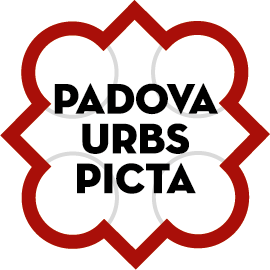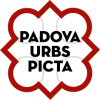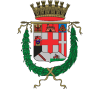This itinerary groups the city’s museums by theme; some of the collections mentioned have regular opening hours, some can only be visited by prior appointment. The range of materials gathered together in the different museums is so varied that, in some cases, their collections contain treasures that even Paduans themselves are unaware of.
The Eremitani Museum Complex and the city’s Archaeological Museum
The Eremitani City Museum
The tour begins with the Eremitani Museum Complex, which comprises some of the greatest museums in the city and now also includes the Scrovegni Chapel itself. In the Archaeological Museum there are materials from the periods of the Veneti and the Romans, as well as finds from Ancient Egypt (some donated to the city by Giovanni Battista Belzoni, a Paduan explorer). Another museum of archaeology is the University Museum of Archaeological Sciences and Art, located in Palazzo Liviano in Piazza Capitaniato (see the site www.musei.unipd.it); this is a collection of sculpture comprising statues from Egypt, Greece, Asia Minor and various civilizations within Italy itself (the Veneti, the Etruscans, the Italic peoples and the Romans). And for those who are interested in the archaeological work carried out along the area’s numerous waterways, there is the Archaeological Museum of Padua’s Aquatic Environments, which is located in the Altichiero district. This reflects the fact that the site of Padua was a marshland prior to land-reclamation projects that continued from Roman days right up to the time of the Venetian Republic.
Within the Eremitani Museum complex there is also a museum of Medieval and Early Modern Art, with works by such artists as Giotto, Giorgione and Tiepolo, and a rich collection of sculpture. The Museum also has a Photography Collection, which preserves a wide range of photographs depicting how the city has changed over more recent centuries.
Opposite the nearby Arena Public Gardens stands Palazzo Zuckermann (in Corso Garibaldi), which houses the Bottacin Collection and the Museum of Applied Arts.
History Museums, Science Museums and Museums of Religious Art
Alongside Palazzo Zuckermann stands Palazzo Cavalli, which houses the University’s Museum of Geology and Palaeontology (www.musei.unipd.it); visits only by prior booking. And a short distance away, in the Department of Mineralogy and Petrology, is the Museum of Mineralogy (www.musei.unipd.it). Walking down Corso Garibaldi, towards the city centre, one gets to the pedestrian area which, a little further on, brings one to Piazza Cavour, where one finds the Galleria Civica, which hosts art and photography exhibitions. Slightly further on, on the upper floor of Caffè Pedrocchi, is the Museum of the Risorgimento.
For those who want to learn more about the First World War, Palazzo Camerini (Via Altinate) houses a Museum of the Italian Third Army. And if you continue along the Listòn, you come to a junction with Via San Francesco, the street in which the old Osepdale San Francesco houses a Museum of the History of Medicine ( www.musme.it).
If, however, you continue along Via Roma in the direction of Prato della Valle, you come to a junction with Via degli Obizzi, where one finds the University Museum of Education (www.musei.unipd.it). And at the end of Via degli Obizzi, in Piazza Duomo, stands the Palazzo Vescovile, which houses the Diocesan Museum.
If, however, you go in the direction of Prato della Valle, you finally reach that massive square at the end of Via Umberto I, where stands the Museum of Pre-Cinema; this contains rare examples of the sorts of optical machines used to generate moving images prior to the Lumières brothers’ great invention. And, from Prato della Valle, if one turns into Via Cavalletto, one can visit the Museum of the National Association of Italian Sailors, a small collection dedicated to information about life at sea.
Within the complex of the Basilica of St. Anthony there is the Museo Antoniano (www.basilicadelsanto.org), which has a collection of church furnishings, an exhibition of ex-votos, paintings by such artists as Tiepolo, Titian and Mantegna, and sculptures by Donatello. And in the Piazza del Santo itself stands the Museo Civico al Santo [City Museum of the Basilica of St. Anthony]. The nearby Botanical Gardens house two other university museums: the Botanical Museum and the Museum of Anthropology (www.musei.unipd.it). and in the University district of Portello (which lies in the area behind the Basilica) there is the University Museum of the History of Physics (www.musei.unipd.it); housed in an old university physics laboratory that dates from 1740, this contains examples of instruments relating to various fields which, since the seventeenth century, have been explored by physicists: electricity, optics, acoustics and thermodynamics. The University Museum of Machines (www.musei.unipd.it) is named after Enrico Bernardi, the first man in Italy to undertake the industrial production of cars and motorized bikes.
Near the Hospital, in Via Jappelli, is the University Museum of Zoology (www.musei.unipd.it) and in Via Cornaro, the ‘Cattedrale’ of the ex-slaughterhouse contains a planetarium and spaces used for art exhibitions and cultural events.
A couple of kilometres away from Via Cornaro, in the Terranegra district, which might almost be described as suburban, stands the Internment Museum, founded to commemorate all those who were imprisoned in concentration camps during the Second World War; this has a collection of films, photographs, objects and documents relating to the period 1939-1945.
This quick tour of Padua’s museums might end with Petrarch’s House in Arquà; the home where the great poet spent the last years of his life, this stands amidst the calm and natural beauty of the Euganean Hills.
Useful Information
Most of the museums lie within the Restricted Traffic Zone, so it is advisable to travel by bus, tram or taxi. All of the museums are within short walks of the inner-city public transport network, with the exception of Petrarch’s House in Arquà; this can be reached by car or using interurban bus services (SITA Nord- BusItalia)
Some of the Museums in the city:
The Museum of Pre-Cinema – Minici Zotti Collection
University Museums
Museum of Medicine
The Basilica of St. Anthony and the Museo Antoniano
Museum of the Italian Third Army
Museum of the National Association of Italian Sailors
Internment Museum
Esapolis: Museum of living insects, silkworms and bees












